If you’re trying to photograph the small world of plants and bugs, you’ll face plenty of challenges along the way. Macro photography is a difficult genre — you’re pushing up against the physical limits of depth of field, diffraction, and motion blur. Naturally, focusing in macro photography isn’t an easy task, but it’s a crucial one. How do you optimize your focusing technique for capturing small subjects? The answer depends upon exactly what you’re photographing.
1) Photographing relatively large subjects
In macro photography, a “relatively large” subject is something the size of a dragonfly or a flower. It’s still small, but it’s not at the level where you need very much specialty knowledge to capture a sharp photo.
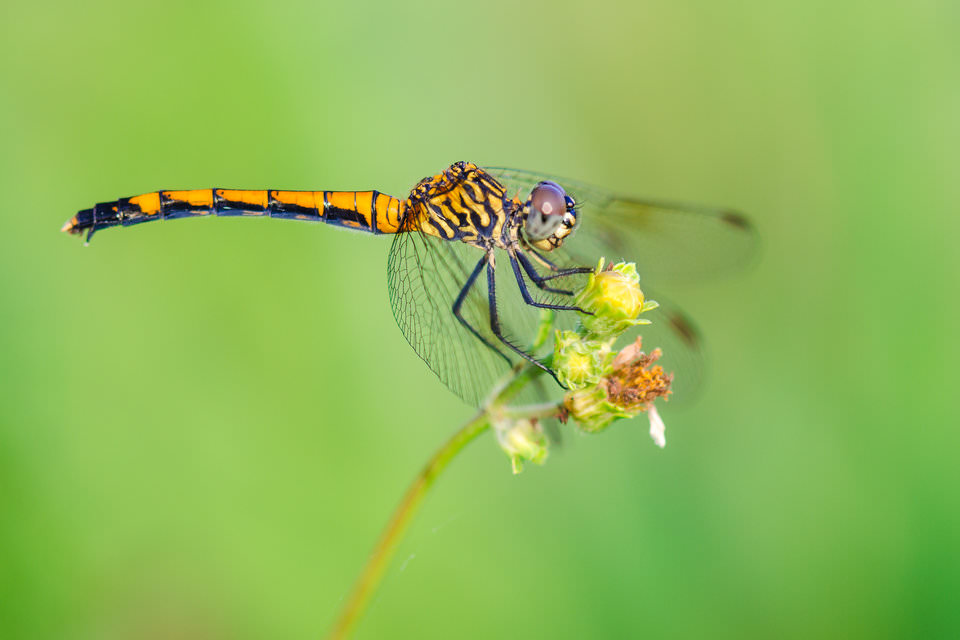
If your subject is about four inches (10 centimeters) or larger, my recommendation is just to focus like you normally would on a moving subject. Use your continuous-servo autofocus (AF-C), with an autofocus area mode that does a decent job tracking your subject across the frame (something like dynamic area or 3D tracking mode).
Even if your subject is staying still (say, a flower on a day without much wind), it’s still best to use continuous-servo autofocus. That’s because, while your subject might not be moving, you will be, no matter how still you’re trying to be. It’s impossible to remain completely motionless while handholding a camera, and any slight movement is very easily visible at such close distances.
The biggest difficulty here is that fast-moving subjects still won’t be very easy to focus on, and there’s not much you can do about that. My main recommendation is to take several photos in a row — on burst mode, for example — since there may only be a fraction of a second where your image is perfectly focused. You don’t want to miss it.
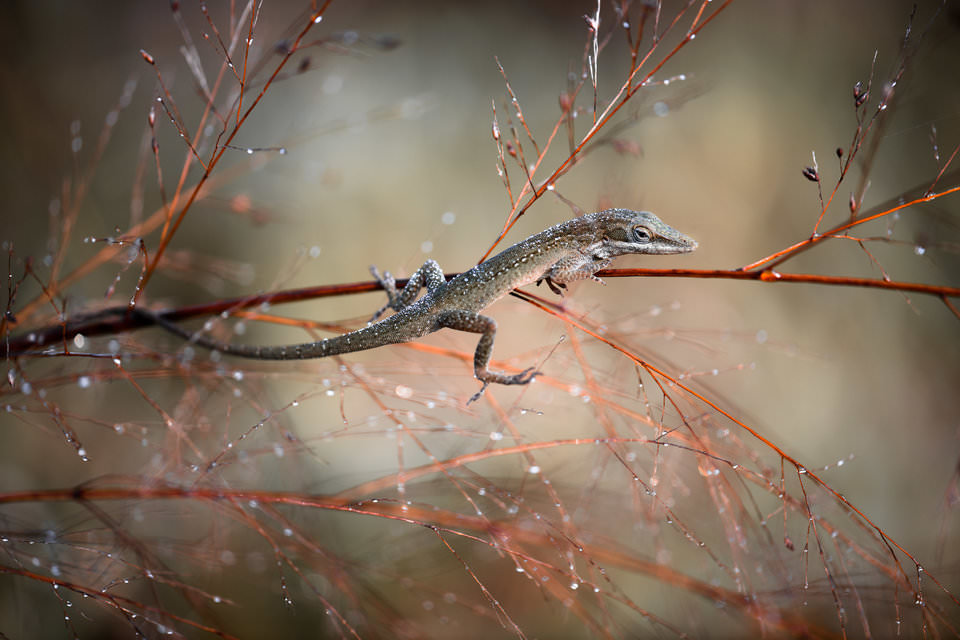
2) Photographing smaller subjects
By the strictest definition, “macro photography” means that you’re focused at 1:1 magnification or stronger. So, if your camera sensor is 1.5 inches wide, the scene captured in your entire photo will also be 1.5 inches wide, or smaller. That’s where things get tricky.
At this magnification, moving your camera forward or backward just a few millimeters at a time is more than enough to throw your entire photo out of focus. And even if you do focus successfully, your depth of field will be remarkably small. In fact, if you want just the head and body of an ant to appear in focus simultaneously, you’re probably out of luck.
As you might expect, even the best autofocus systems on the planet will struggle in situations like this. The problem becomes even worse if your subject is moving around quickly, and you have to track its movement without losing focus.
But that doesn’t mean it’s impossible to focus on tiny subjects, even if they’re moving. The insect in the photo below, for example, was moving around very quickly, and I was focused at 1:1 magnification for this shot. How did I manage to get it so sharp?

The answer is surprisingly simple, yet counterintuitive: Use manual focus.
Yes, for normal photography, manual focus tends to be slower than autofocus. Plus, for fast-moving subjects, it is generally less accurate. High-magnification macro photography is a different beast, though, and this is one case where manual focus is the best option available — but only if you use it correctly.
The proper way to focus manually for macro photography isn’t to compose your photo, then spin the focusing ring until the image in your viewfinder appears sharp. Instead, it’s to set your focusing ring at a particular point, and then move forward and backward until the image appears sharp.
For example, for high-magnification macro photography, I’ll set my lens to its closest focusing distance of 1:1 magnification. Then, I’ll slowly rock forwards and backwards in the field, by no more than a couple centimeters at a time, waiting for my subject to look focused. When it’s perfectly sharp — which may happen for just a fraction of a second — I take the photo as quickly as possible.
This process is made easier by using a relatively small aperture, typically somewhere from f/11 to f/22. That, of course, cuts down significantly on the amount of light in your photo, and chances are good you’ll need to use a flash to optimize your photo. I’ve covered some of this before in an article on macro photography lighting.
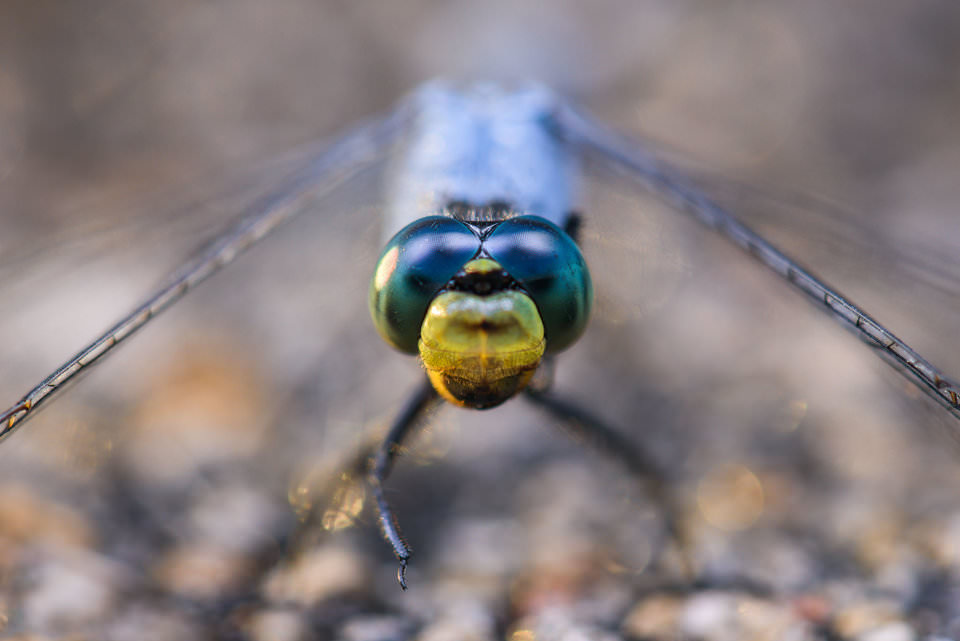
If it helps, you might consider resting your camera on top of a monopod or stick while you move it forward and backward. That can cut out on some of the extra vibrations and imprecision from handholding the camera, although the downside is that you’ll lose some flexibility with regards to your camera’s height.
Also, be warned that even a good macro focusing technique won’t give you a perfect success rate. Personally, even under the best possible conditions (no wind, and a nonmoving subject), only about 1/3 of my handheld 1:1 magnification photos are as sharp as possible. It’s not an easy job.
However, this is the type of thing you’ll improve upon over time. Like all areas of photography, it takes practice.
3) Using a tripod
Some macro photographers get around the difficulties of handheld focusing simply by using a tripod. Which types of subjects lend themselves to this method? In general, for a subject that is moving, it is almost impossible to use a tripod and accurately capture an in-focus macro image. Instead, it’s best to use a tripod for relatively stationary macro subjects.
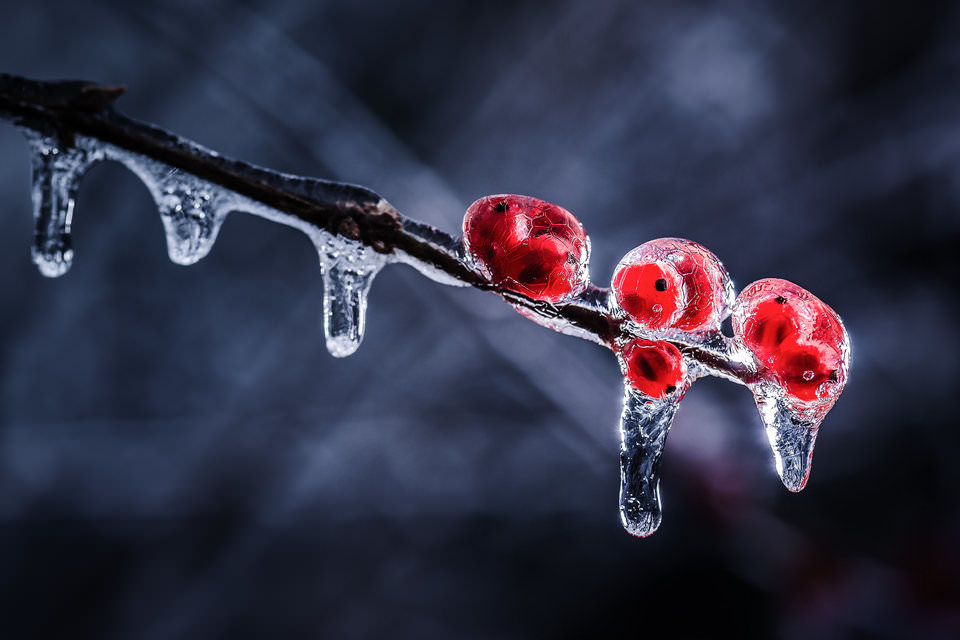
If your subject is staying still, you have a lot of flexibility in how you set up your tripod. You can take as much time as you need to move the tripod forward and backward, adjust its height, and change your composition. Still, there are some tripod attachments that are invaluable for this type of photography, since they’ll make your work much, much quicker: Focusing rails.
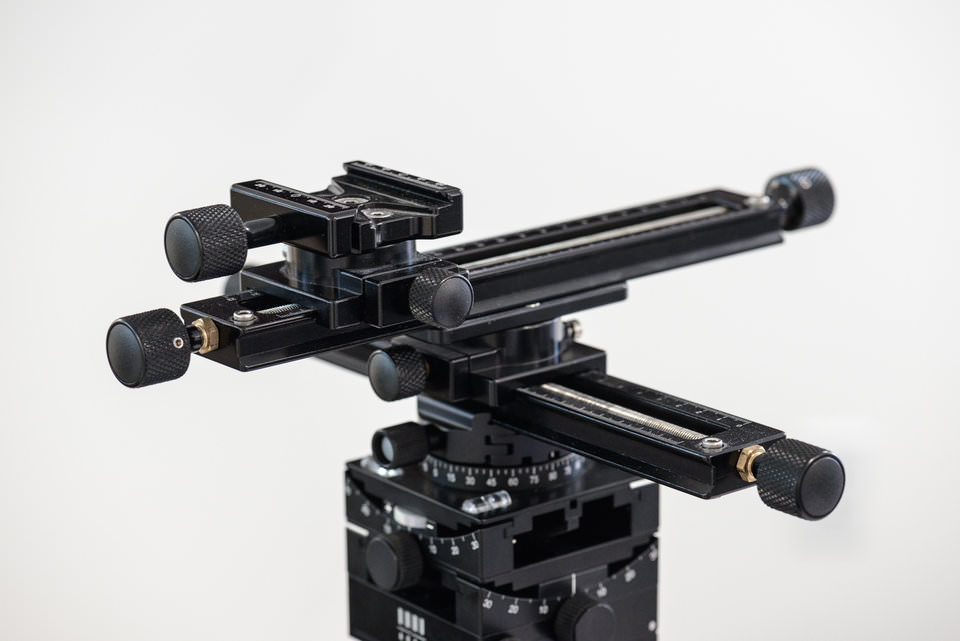
With a complete focusing rail setup, you have the ability to move your camera by fractions of a millimeter at a time, in any direction. Compare that to a typical ballhead, where the finest movements you can make are very large and imprecise. The difference will be night and day; a focusing rail setup can save you a lot of time and headache in the field.
Also, focusing rails make it far easier to focus stack your macro photos, which can be valuable for capturing the greatest possible depth of field with nonmoving subjects.
4) Conclusion
Where there’s a will, there’s a way. Focusing in macro photography isn’t an easy task, but you still have options at your disposal to capture the sharpest possible photos.
For relatively large subjects, just focus like you would for typical handheld photography, as if you’re just taking normal pictures of wildlife. For smaller subjects, though, your best bet is to focus manually, while rocking forward and backward until your subject looks as sharp as possible in your viewfinder. Neither of these is a perfect method, so, if you’re photographing nonmoving subjects, you may prefer a tripod-based setup with focusing rails instead.
As with all things in photography, the method you use will depend upon the specific subjects you tend to shoot. It’s possible to focus on nearly every subject in macro photography (though bugs in flight still remain my nemesis), so the best thing to do is simply to practice. The more time you spend perfecting each focusing method, the better your macro photos will be.